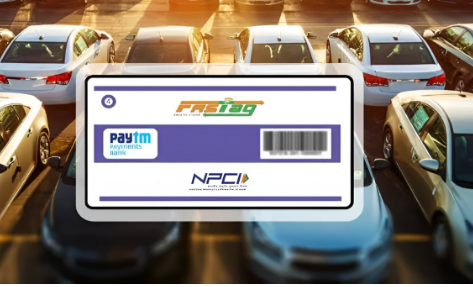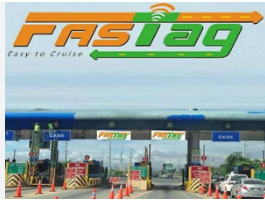
For millions of highway travelers in India, toll plazas often become a point of frustration—delays, cash hassles, and rising costs can turn a smooth journey into a stressful one. But a revolutionary change is coming this year. The Government of India has announced a new initiative that promises to make highway travel more seamless and economical for private vehicle owners. Starting 15 August 2025, users can subscribe to an annual FASTag pass by paying just ₹3,000 and enjoy what is being called “unlimited highway travel” across NHAI toll plazas.
What Is the ₹3,000 FASTag Annual Pass?
The FASTag annual pass is a new system developed by the Ministry of Road Transport and Highways (MoRTH) and National Highways Authority of India (NHAI) to simplify toll payments for private non-commercial vehicles, such as cars, jeeps, and vans. For a flat fee of ₹3,000 per year, a vehicle owner can travel across national highways and access FASTag-enabled toll booths without needing to make separate payments at each crossing. This pass is valid for either a full 12 months or 200 individual toll plaza trips, depending on which limit is reached first.
Each time a vehicle crosses a toll plaza, one trip is counted. So, even if a user travels a long distance passing through multiple plazas, each crossing will be individually deducted from the 200-trip limit. After reaching either the one-year duration or completing 200 toll trips, the pass expires, and the user would need to recharge their FASTag or purchase a new annual pass.
How the Pricing Offers Huge Savings
At a price of ₹3,000 for 200 trips, the cost per toll plaza effectively comes down to ₹15 per crossing. In comparison, a typical toll plaza charges anywhere between ₹80 to ₹100 for one trip for private vehicles. That means a frequent highway user could potentially save ₹65 to ₹85 on every single crossing, which translates to substantial annual savings. This new FASTag model is primarily targeted at individuals who travel frequently on highways, such as inter-city commuters, business professionals, and frequent long-distance travelers.
For example, someone who drives daily from Delhi to Gurugram, Noida, or Faridabad, would usually cross at least two toll booths per day. With this plan, they could use up their 200-trip quota quickly but at a fraction of the regular cost. Meanwhile, those who do not travel as frequently may not fully benefit from the pass, making it less cost-effective for occasional travelers.
Launch Date and Access Platforms
The official announcement for the new FASTag pass was made on 18 June 2025 by Union Minister Nitin Gadkari. The service will go live from 15 August 2025, which coincides with India’s Independence Day. The pass can be activated through the Rajmarg Yatra App, along with websites and digital platforms managed by NHAI and MoRTH. Users must already have a FASTag-enabled vehicle, and the pass will be digitally linked to their existing FASTag account.
The entire process is designed to be user-friendly, requiring minimal documentation. Unlike the earlier monthly local passes, this new system does not require address verification or local residency proof, making it accessible to vehicle owners across India.
Who Should Opt for the FASTag Annual Pass?
This ₹3,000 annual pass is an excellent option for frequent travelers who regularly use India’s growing network of national highways. People who commute daily between states or travel across multiple toll points will find significant value in this offering. For example, business professionals who drive regularly for client meetings or logistics purposes can save both money and time with this flat-rate pass. Families who enjoy weekend road trips or travel frequently during holidays would also benefit, especially when their routes include several toll booths.
However, if you are someone who only occasionally drives on national highways—maybe once or twice a month—then the pass might not provide enough value. Since the total number of trips is capped at 200, those unused trips would go to waste if not utilized within the year. Additionally, there will reportedly be a pay-per-use option introduced in the future for occasional users, where tolls will be charged at a flat rate of ₹50 for every 100 kilometers. This upcoming alternative may better suit those who do not travel frequently enough to exhaust the 200-trip limit.
A Step Toward Barrier-Free Tolling
The FASTag annual pass is more than just a convenience tool—it is also part of a broader vision of barrier-free tolling being introduced by the Indian government. With technologies like Automatic Number Plate Recognition (ANPR) and satellite-based GPS toll collection in development, the long-term goal is to eliminate toll plazas entirely. Vehicles will be billed based on the distance traveled, removing the need for physical barriers and reducing travel time dramatically.
This initiative aligns perfectly with the central government’s strategy to digitize transportation, encourage cashless systems, and reduce fuel wastage at toll booths. By introducing the annual pass now, the government is preparing citizens and the system for a future-ready toll collection method that will be based entirely on smart mobility solutions.
How to Use the FASTag Annual Pass
To use the new pass, vehicle owners must first download the Rajmarg Yatra App or access the official NHAI or MoRTH websites. After registering and paying the ₹3,000 fee, the pass will be activated and linked to the user’s existing FASTag wallet or prepaid account. Each time the vehicle crosses a FASTag-enabled toll plaza, the system will automatically deduct a trip count from the 200 allotted trips. There will be no deduction in the FASTag monetary balance until all trips have been used or the one-year period ends.
Once the limit is reached, the pass expires, and users will have the option to recharge with a regular FASTag balance or purchase a new annual pass. The government is also working to ensure that the app and portals are easy to navigate, ensuring accessibility even for those who are not tech-savvy.
Key Advantages of the FASTag Annual Pass
The pass offers multiple benefits. First and foremost, it provides massive cost savings for heavy users of national highways. By reducing the per-trip cost to only ₹15, frequent travelers will significantly cut down on their annual toll expenditure. Second, it eliminates the need to carry cash or worry about insufficient FASTag balance during long trips. Since the pass is prepaid and valid across the country, travelers can enjoy a hassle-free, uninterrupted journey.
Moreover, this initiative is expected to decongest toll plazas, reduce fuel consumption due to idling, and promote environmental sustainability. It also supports the government’s ambition to build a digitally connected India, where technology simplifies everyday life.
Challenges and Considerations
Despite its numerous advantages, the FASTag annual pass is not without potential challenges. There is concern that the plan might require adjustments in agreements with private toll operators, especially those working under Public-Private Partnership (PPP) models. These operators are currently paid based on the actual toll collected, and a flat-fee model could impact their revenue projections. The government will need to develop revenue-sharing mechanisms that ensure fair compensation to these stakeholders.
Another issue is ensuring smooth functionality across the board. Instances of double charges, faulty sensors, or miscounts in existing FASTag systems have been reported in the past. For this annual pass to succeed, it is crucial that real-time monitoring, error-free trip logging, and effective customer support systems are in place from day one.
The launch of the ₹3,000 FASTag annual pass marks a major milestone in India’s journey toward modern, digital highway infrastructure. It reflects the government’s proactive approach in addressing the everyday pain points of road travelers while simultaneously preparing for a future of barrier-free travel. For frequent users, this pass is a game-changing solution that brings together convenience, cost-effectiveness, and modern technology.
As with any new policy, the true success of this initiative will depend on its implementation, adaptability, and user experience. But if executed effectively, the FASTag annual pass could be the beginning of a smarter, smoother, and more economical travel era on Indian highways.

































